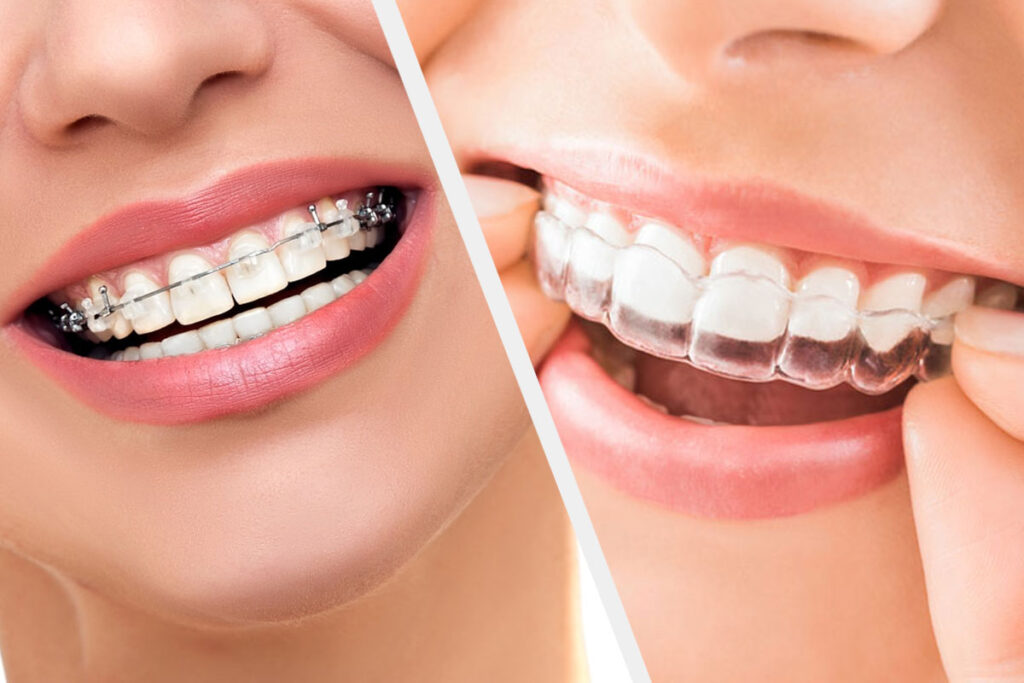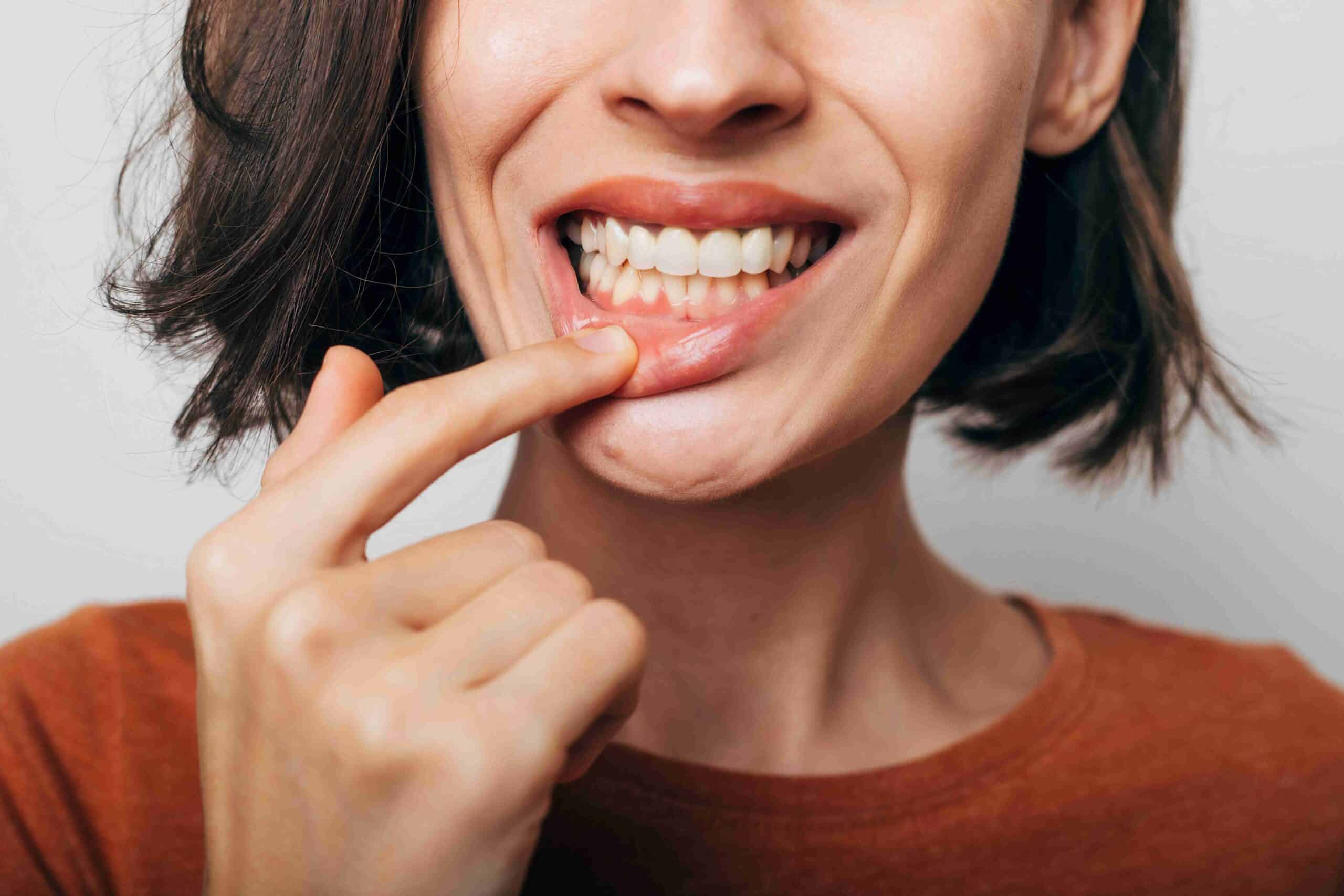What is Malocclusion?
Malocclusion is a dental term that refers to misalignment of the teeth or an irregular bite. In simple words, it means that your upper and lower teeth don’t fit together properly when you close your mouth. This can affect not only the appearance of your smile but also how you chew, speak, and maintain oral hygiene.
At Chagger Dental, we often see patients who don’t even realize they have a malocclusion until it starts causing discomfort, jaw strain, or cosmetic concerns. Some people have teeth that are crowded or overlapping, while others have too much space between their teeth. In more severe cases, the jaws themselves may not align correctly, which can affect the entire bite.
Understanding what causes malocclusion and how it can be treated is an important first step towards improving your smile and oral health.
Causes of Malocclusion
Malocclusion can develop for a number of reasons, many of which start early in life but may also occur due to changes later on. Here are the most common causes:
1. Genetics
The structure of your jaw and teeth is largely hereditary. If your parents or grandparents had crowded teeth, an overbite, or an underbite, there’s a good chance you might too. Inherited traits such as small jaws, large teeth, or irregular jaw shapes can make it difficult for teeth to align properly.
2. Tooth Loss
When a tooth is lost and not replaced promptly, the surrounding teeth can drift into the space. This movement alters your natural alignment and can throw off the balance of your bite. Over time, this may lead to further shifting, jaw discomfort, or difficulty chewing.
3. Bruxism (Teeth Grinding)
Bruxism refers to the habit of clenching or grinding your teeth, often while asleep or under stress. Over time, this constant pressure wears down the enamel, flattens the biting surfaces, and can gradually shift teeth out of position. It’s also one of the main contributors to jaw pain and temporomandibular joint (TMJ) problems.
4. Childhood Habits
Certain childhood habits can contribute to the development of malocclusion. Prolonged thumb sucking, pacifier use beyond age four, or tongue thrusting (pressing the tongue against the front teeth) can affect the position of growing teeth and the shape of the jaw. The earlier these habits are addressed, the easier it is to prevent long-term misalignment.
5. Jaw Size and Shape
The size of your jaw plays a significant role in how your teeth are arranged. If your jaw is too small, there might not be enough room for all teeth to erupt properly, causing crowding or overlapping. Conversely, a jaw that is too large may result in gaps or spacing between teeth. Jaw growth discrepancies are a common reason why orthodontic treatment is needed during adolescence.
Types of Malocclusion
Malocclusion can take different forms depending on how your teeth and jaws are positioned. Understanding the type you have helps determine the most suitable treatment plan.
1. Crowded Teeth
Crowded teeth occur when there isn’t enough space in the jaw for all the teeth to fit in their proper positions. This leads to overlapping, twisting, or crooked teeth. Crowding can make brushing and flossing difficult, increasing the risk of plaque buildup, cavities, and gum disease. Many patients seek treatment for crowding not only to improve function but also to achieve a more attractive smile.
2. Crossbite
A crossbite happens when some of your upper teeth sit inside the lower teeth when you bite down. This can occur on one or both sides of the mouth. Crossbites can lead to uneven wear on the teeth, jaw strain, and, in some cases, facial asymmetry if left untreated.
3. Overbite
An overbite refers to a condition where the upper front teeth excessively overlap the lower front teeth. A small overbite is normal, but when it’s too deep, it can cause wear on the lower teeth, jaw discomfort, and even changes in facial appearance. Severe overbites can sometimes make the lower face appear shorter.
4. Underbite
An underbite is when the lower front teeth extend further forward than the upper front teeth. This can be caused by an overdeveloped lower jaw or an underdeveloped upper jaw. An untreated underbite can make chewing difficult and put strain on the jaw joints.
5. Open Bite
An open bite occurs when the upper and lower teeth don’t touch when the mouth is closed. It can happen in the front (anterior open bite) or at the back (posterior open bite). People with open bites often have trouble biting into foods and may develop speech issues such as lisps.
6. Spacing or Gapped Teeth
Some people naturally have more space between their teeth than usual. This can be due to missing teeth, small teeth, or a large jaw. While gaps may seem harmless, they can trap food particles and make cleaning less effective, leading to gum irritation or inflammation.
Symptoms and Effects of Malocclusion
Malocclusion isn’t just about appearance. It can have real, everyday effects on your oral health and comfort. Some of the most common symptoms include:
1. Difficulty Chewing
If your teeth don’t meet properly, you may find it hard to chew food efficiently. Over time, this can cause uneven tooth wear or digestive issues due to improper chewing.
2. Jaw Pain and TMJ Problems
Misaligned bites place extra pressure on the jaw joints (the temporomandibular joints or TMJ). This can lead to pain, popping sounds, headaches, and even restricted jaw movement.
3. Speech Difficulties
Certain types of misalignment can affect the way your tongue and lips form sounds, making pronunciation harder or altering your speech clarity.
4. Tooth Wear and Damage
If your bite isn’t balanced, some teeth may bear more pressure than others, leading to premature enamel wear, chips, or cracks.
5. Gum Problems
Crooked or crowded teeth make it harder to reach all surfaces with your toothbrush or floss. This allows plaque and bacteria to accumulate, increasing the risk of gum disease.
6. Aesthetic Concerns
Your smile has a big impact on your confidence. Misaligned teeth can change the way your smile looks, and in some cases, alter your facial profile. Many patients seek treatment for cosmetic reasons, but the health benefits that come with it are just as important.
Treatment Options for Malocclusion
At Chagger Dental, we offer a variety of orthodontic treatments designed to correct malocclusion based on its cause, severity, and your personal preferences. Whether you’re dealing with minor crowding or complex jaw alignment issues, our team will recommend the best solution for you.
1. Traditional Metal Braces
Metal braces have been used for decades because they’re highly effective for complex misalignments. They consist of metal brackets bonded to each tooth, connected by wires that gently move the teeth into their correct positions over time.
Regular adjustments are required every few weeks, and although they’re more visible, today’s braces are smaller, sleeker, and more comfortable than ever before.
2. Ceramic Braces
Ceramic braces work just like metal ones but use tooth-coloured or clear brackets that blend with your smile. They’re popular among adults and teens who want a more discreet option without sacrificing effectiveness.
3. Invisalign® Clear Aligners
Invisalign is one of the most advanced and comfortable ways to straighten teeth without the metal wires or brackets. The system uses a series of custom-made, clear plastic aligners that fit snugly over your teeth and gently shift them into place.
The aligners are removable, so you can eat, brush, and floss normally. Treatment typically lasts between 6 to 18 months, depending on the case, and regular check-ins ensure progress stays on track.
4. Orthognathic (Jaw) Surgery
For patients with severe skeletal issues or bite discrepancies that can’t be corrected with braces or aligners alone, corrective jaw surgery may be recommended. This surgical procedure repositions the jawbones to improve both function and aesthetics. It’s usually done in collaboration with an oral surgeon and orthodontist to achieve optimal results.
5. Retainers and Maintenance
After completing orthodontic treatment, retainers are essential to keep your teeth in their new positions. Skipping retainers can cause your teeth to gradually shift back, undoing months of progress.
Why It’s Important to Treat Malocclusion
Ignoring malocclusion can lead to a range of problems that go beyond appearance. Some long-term effects include:
- Tooth decay and gum disease from poor cleaning access
- Chronic jaw pain and headaches
- Speech difficulties
- Uneven tooth wear and breakage
- Reduced confidence when smiling or speaking
Treating malocclusion early, especially during childhood or adolescence, can prevent these complications. However, adults can also achieve excellent results with orthodontic care at any age.
At Chagger Dental, our team takes a conservative yet effective approach, ensuring that each patient receives a solution suited to their lifestyle, budget, and comfort.
Your Path to a Healthier Smile
A healthy, well-aligned bite does more than improve appearance; it supports better oral function and long-term dental health. Whether you’re considering traditional braces or Invisalign®, the goal is to create harmony between your teeth, jaws, and facial features.
At Chagger Dental, our orthodontic team provides comprehensive assessments, 3D imaging, and tailored treatment plans to help you achieve the best results. We focus on patient comfort, advanced technology, and clear communication every step of the way.
Book a consultation with our team to discuss your options and start your journey toward a balanced, confident smile.
Frequently Asked Questions
1. What are the symptoms of malocclusion?
The most common signs include crooked or crowded teeth, difficulty chewing, jaw pain, and teeth that don’t fit together properly when biting.
2. Can malocclusion be treated without braces?
Yes. Mild to moderate misalignments can often be corrected with Invisalign® clear aligners, which are virtually invisible and removable.
3. How long does orthodontic treatment take?
Treatment time varies by case. Invisalign usually takes 6 to 18 months, while braces may take up to 24 months for more complex issues.
4. Is orthodontic treatment painful?
You might experience slight pressure or soreness after adjustments, but it’s temporary and a normal part of the process.
5. What happens if malocclusion is left untreated?
Untreated malocclusion can cause gum disease, jaw strain, tooth wear, and even chronic headaches.
6. Are clear aligners suitable for everyone?
Most patients with mild to moderate misalignment are good candidates. Our dentists will assess your bite and recommend the best option.



















